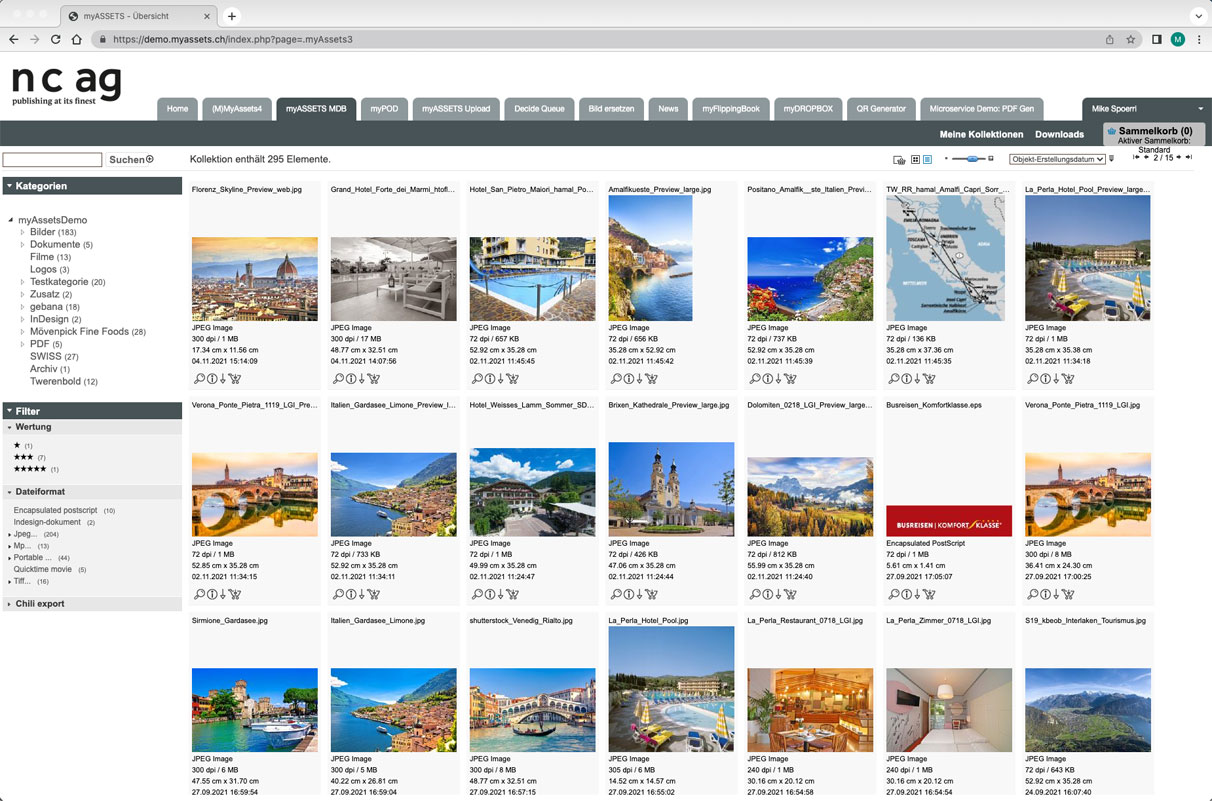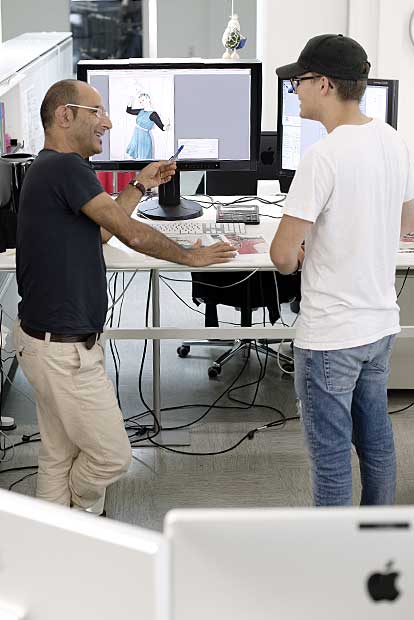
Digital workflow splits and connects
A lot is written about technical innovations in media production. In one camp, this remains a skilled craft for specialists; in the other, the production workflow has become routine. How we work together in media production is changing.
A report by Marketing & Kommunikation, July 2017– Hannes Zaugg
In the past, materials were mainly printed and the process for doing so was analog. This required a multitude of individual steps that only specially trained employees could perform. For example, impositioning of print sheets was the job of the offset technician, who was specially trained for this task. This has all totally changed with digitalization, with the workflow becoming simpler and thus more manageable. The (digital) text, image or graphic parts, so-called media assets, can be fed automatically from one step to the next, meaning that today the impositioning of print sheets is usually performed by software. With the advent of IT, media production can be controlled via a computer and a number of work steps can even be automated. This makes the workflow more manageable and more open. Individual hand movements and a trained eye are no longer the sole keys to success; anyone with good IT skills can learn the rest quickly. This is why today, just as many media producers are getting trained outside the graphics industry (for example, as Publisher Basic by the Migros Club School) as they are at conventional printing companies.
Multimedia production
In addition, print-ready files can be used entirely or in part for other media; a website or even media for mobile devices can, in most cases, be created from them with little effort, and vice versa. The desktop publisher, who chiefly creates print files, is a close relative of the web publisher, who designs web pages. And both work with the same or similar software on the same screens.
The fact that media production now deals with multiple options is also reflected in the media assets that can be used for different media. This is a significant point, since this option holds great savings potential, which clients are increasingly keen to exploit. Communications costs have risen sharply owing to the wide range of media options; every opportunity to curb cost increases is taken gladly and immediately. Firms are thus increasingly operating databases of media assets in-house, and growing numbers of advertising clients are acquiring communications systems that cover everything from concept to planning and execution, including efficient media asset management tools. And all this means they are also taking a greater hand in the production process itself.

Added work due to change of strategy
But enough of the theory now, let’s hear from some experts who experience digitalization firsthand and work on a daily basis with customers actively involving themselves in media production. How do they judge this change, where do they see benefits, what should and could still be improved in media production collaboration?

Othmar Krienbühl, co-owner of Linkgroup (Zurich), points to the shift in strategy that many customers are experiencing and which is changing collaboration in a significant way. Where the motto used to be “print first”, more and more clients are now switching to “online first”. To continue producing media as effectively and efficiently in the future, professional project management is required.
Mike Spoerri, COO at n c ag in Urdorf, sees things similarly. For him, it’s not so much the different levels of knowledge or experience that pose problems, it’s the tasks that have become more complex. That’s why, particularly in large companies, greater importance is sometimes attached to the methods than to the content. René Rötheli of Köpflipartners (Neuenhof) adds that tasks that look simple thanks to modern technology have actually become more challenging, as demonstrated by the photo stored in the database that was first used in the company brochure and is now also wanted for the website. The customer usually doesn’t realize that this requires different data formats, image profiles and minimum resolutions. Mike Spoerri illustrates this using the example of multipage products that are laid out wrongly because the shortened pages were not properly taken into account. No wonder then that René Rötheli always asks himself whether they can guarantee good quality as well as an optimal process if customers carry out further work themselves.
Technical aids for an optimal process
His recipe for success is called templates. Köpflipartners’ aim is to offer customers the kind of specific help that both makes their work easier and gives the supplier full control. At Linkgroup, the recipe is publishing platforms that they configure themselves and are used mainly in financial and corporate publishing. n c ag wants to primarily make a name for itself as a full-service provider of software solutions in the field of media production. This will enable them to take full ownership of all the work involved in the production process and ensure that the media are used correctly.
Everyone agrees that the only route to optimum collaboration is through professional consulting. The right technology alone isn’t enough; it requires specific adaptation to client needs, which differ from one case to the next.
